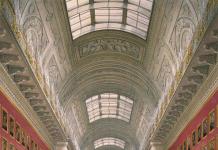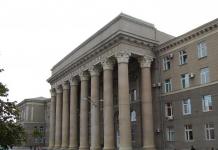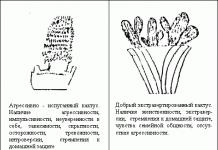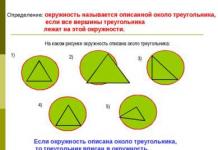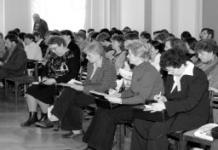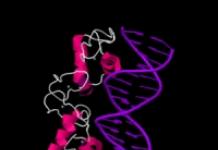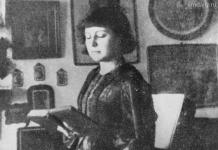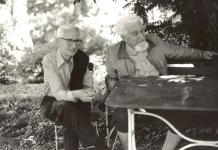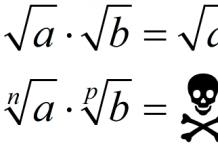In the history of mankind there have been many outstanding travelers and explorers of previously unknown lands. Representatives of various nations and eras, on foot and at sea - they tirelessly studied the secrets of various corners of the globe.
But among them Nikolai Nikolaevich Miklouho-Maclay stands apart. His biography is very unusual. The future great traveler was born in 1846 in one of the villages of the Novgorod province. When his family moved to the capital of the empire 12 years later, Miklouho-Maclay began attending the gymnasium. Studying there was difficult for him. In 1863, after graduating from high school, he began studying at the university (at the Faculty of Physics and Mathematics). But political activity puts an end to this training after just a year.
Miklouho-Maclay moved to Germany, mastering philosophy, chemistry and medicine. So we have before us an interesting fact – the lack of systematic education in the modern sense. However, then this was more the rule than the exception...
Turn in the life of Miklouho Maclay
It would seem that our hero could become a doctor, philosopher or chemist. But... chance intervened. Namely, a meeting with the outstanding biologist Ernst Haeckel. He invited Miklouho-Maclay to an expedition heading to Morocco and the Canary Islands.
Interesting fact: while working (after training) in Sicily, the researcher contracted malaria. So he undertook all his famous travels while already ill. At the end of the 1860s, Miklouho-Maclay visited the coast of the Red Sea, studying its fauna. As a result of the trip, he not only collected a large collection, but also put forward a proposal to create marine biological stations.
Miklouho Maclay and New Guinea
On the other hand, the interests of the scientist are making another U-turn. He became interested in geography and anthropology. In 1870, the journey to New Guinea begins. The local population was not very well disposed towards foreigners, to put it mildly. What can we say if individual tribes were at enmity with each other? Miklouho-Maclay managed to reverse this situation and become practically “one of our own” in this amazing land. Note that he conducted not only ethnographic research - a previously unknown archipelago and strait were mapped, and several plant species were discovered.
Among the interesting facts about Miklouho-Maclay is this: despite his rather scattered preparation, the geographical and meteorological observations he made in Australia, Southeast Asia and Oceania are largely relevant today.
This is interesting
But the interesting facts from the life of Miklouho-Maclay do not end there. Thus, the reasons for his poor performance at the gymnasium are still unclear. According to one version, this is still the same political activity, according to another, banal conflicts with teachers. Of all areas of medicine, the great traveler gave preference to comparative anatomy.
While traveling through the Red Sea, he pretended to be an Arab to avoid conflicts. Miklouho-Maclay’s explorations of this tropical region were carried out completely alone. Subsequently, already in New Guinea, he managed to prevent many conflicts among the local residents.
Nikolai Nikolaevich Miklukho-Maclay was born on July 17, 1846 in the village of Yazykovo-Rozhdestvenskoye, Borovichi district, Novgorod province.
Biography of Miklouho-Maclay
After the family moved to St. Petersburg in 1858, he began studying at the Second Petersburg Gymnasium; His studies were difficult, and in 1861 he was almost expelled for participating in a student demonstration. In 1863, after graduating from high school, Nikolai entered St. Petersburg University, becoming a volunteer student at the Faculty of Physics and Mathematics. In 1864, again becoming a participant in student unrest, he was expelled, deprived of the right to study at Russian higher educational institutions.
To continue his education, the future traveler Miklouho-Maclay went to Germany, where he studied philosophy, medicine, and chemistry at the universities of Heidelberg, Leipzig and Jena. At the same time, a significant event took place in the biography of Miklouho-Maclay - a meeting with the zoologist and naturalist E. Haeckel, who invited the young scientist to take part in a scientific expedition to the Canary Islands and Morocco.
Beginning in 1868, after graduation, traveling for the purpose of research became the meaning of his life. In 1884, while living in Australia, he married and had two sons. Returning to Russia in 1886, he no longer went on large expeditions, limiting himself to anthropological research in Ukraine.
On April 2 (14), 1888, the great Russian scientist died at the Willie Clinic in St. Petersburg. The biography of Miklouho-Maclay is a vivid example of the biography of a real scientist, devoted to science to the point of self-sacrifice.
Travels of Miklouho-Maclay
After completing his studies, Miklouho-Maclay worked in Sicily, where he worked on two topics: the morphology of sponges and the anatomy of the fish brain. Here he first contracted malaria, a disease that would haunt him throughout his life.
Miklouho-Maclay's first journey after completing his studies was a trip in 1869 to the Red Sea coast, where he studied lower marine animals. Returning to Russia, he brought with him a collection of sponges, now kept in the Zoological Museum. In a speech at the Second Congress of Naturalists in 1869, he proposed creating marine biological stations. The proposal was accepted and marked the beginning of the creation of the Sevastopol biological station.

At the same time, Miklouho-Maclay became interested in issues of anthropology and ethnography, deciding to engage in research in little-studied areas of the world, choosing New Guinea for this, which was greatly facilitated by the article “New Guinea” by A. Petermann that he read. Having presented his expedition project to the Russian Geographical Society, Miklouho-Maclay received approval from the Society's Council and an allowance of 1,200 rubles. In November 1870, on the ship "Vityaz" he set sail for the shores of New Guinea, and on September 20, 1871, he landed on the shore of the Coral Sea near the village of Bonga - a shore that would soon be named after him.
Here he lived for more than a year, living in a hut on the shore, he was engaged in anthropological research, studied the life of the aborigines, treated them, planted seeds of imported plants, traveled around the country, sailed around the nearby islands and archipelagos. He quickly learned the local language and gained authority among the Papuans.
Nikolai Nikolaevich Miklouho - Maclay was born on July 17, 1846. He was born in the village of Yazykovo-Rozhdestvensky, Novgorod province. The future famous ethnographer and traveler was born into a noble family. The biography of Nikolai Miklukha is rich in many different events and interesting facts.
Nikolai's father, Nikolai Ilyich Miklukha, was a railway engineer. Mother Ekaterina Semyonovna came from the noble family of Beckers, who distinguished themselves during the Patriotic War of 1812. Due to his father's work, the family was forced to constantly move. In 1855, the entire family arrived for permanent residence in St. Petersburg. Miklouho-Maclay’s family was of average income, but there was only enough money for education and raising children.
After his father's death, Nikolai's mother made a living by drawing geographical maps. This gave her the opportunity to invite teachers to her home for her two sons Nikolai and Sergei. Since childhood, Nikolai mastered the German and French languages. His mother hired an art teacher for him, who was able to discover artistic abilities in the boy.
For the first three years after moving to St. Petersburg, Nikolai attended a private school, but after the death of his father, paid education became unavailable for the family. The brothers were transferred to a state gymnasium. Studying was difficult for the boy. Nikolai often skipped classes. Soon he took part in a student demonstration and ended up in prison.
Studying at the University
Nikolai quit studying at the gymnasium after entering the 6th grade and began listening to lectures at the university. His attention was attracted by scientific activities, so he became a volunteer student at the Faculty of Physical and Mathematical Sciences of St. Petersburg University. In addition to the basic courses, Nikolai seriously studied physiology. However, he failed to obtain a higher education diploma in Russia. Due to a small incident, the young man was forbidden to attend lectures.
The desire to study natural sciences was so strong that the mother, giving in to her son’s persuasion, sent him to study in Germany. While living abroad, Nikolai changes to three different universities. He first entered the University of Heidelberg, then transferred to the medical faculty of the University of Leipzig. The last place of study is the University of Jena, where Nikolai studies animal anatomy. Having received his diploma, the young man returns to Russia.
Scientific activity of Nikolai Nikolaevich Miklouho - Maclay
The University of Jena gave Nikolai the opportunity to participate in a scientific expedition for the first time. He was Haeckel’s favorite student and assistant, so at the professor’s request he went with him to Sicily to study the flora and fauna of the Mediterranean. Practical experience was useful to Nikolai during his trip to the island of Tenerife.
The real scientific activity of Nikolai Nikolaevich began after his trip to Morocco. He discovered several types of microorganisms. However, the local population did not understand the scientists’ interest, and the expedition had to be curtailed. The scientist returned to Jena only in 1867. This summer, Nikolai published his first scientific article in the Jena Journal of Medicine and Natural History.
The scientist undertook two large and long trips to New Guinea, where he studied the life and activities of local tribes. Initially, the local population was wary of the researcher, but then he was accepted as a good friend. Nicholas lived in New Guinea from 1870 to 1872.
Personal life of Nikolai Nikolaevich Miklouho - Maclay
The scientist’s lectures were a success not only in Europe, but also in Russia. He spoke about the natives of New Guinea at meetings with the imperial family. Subsequently, Nikolai Nikolaevich conducted several more expeditions to Indonesia, Hong Kong, and Australia. While in Australia, Nikolai met his future wife Margarita Robertson - Clark. In 1886 they officially got married. From this marriage Nikolai had two children.
In 1887, the scientist returned to Odessa. Here he creates a project for a scientific marine station, but Emperor Alexander the Third did not support his decision. Numerous travels and research worsened Nikolai’s health. He received a serious jaw disease, which doctors later determined was a malignant tumor. Nikolai Nikolaevich died in 1888.
Nikolai Nikolaevich Miklouho-Maclay was born into the family of a railway engineer. The family had hereditary nobility, which was earned by Miklouho-Maclay’s great-grandfather - a native of the Chernihiv region, Zaporozhye Cossack Stepan Miklukha, who distinguished himself during the capture of Ochakov (1788).
Later the family moved to St. Petersburg, where from 1858 Nikolai continued his studies at the Second St. Petersburg Gymnasium. After completing his gymnasium course, Miklouho-Maclay continued his studies at the Faculty of Physics and Mathematics of St. Petersburg University as a volunteer student. The study was not long. In 1864, for participating in student gatherings, Miklouho-Maclay was expelled from the university and he, using funds raised by the student community, left for Germany. In Germany, he continues his studies at the University of Heidelberg, where he studies philosophy. A year later, Miklouho-Maclay was transferred to the medical faculty of the University of Leipzig, and then the University of Jena. At the University of Jena, Nikolai meets the famous zoologist E. Haeckel, under whose guidance he begins to study the comparative anatomy of animals. As Haeckel's assistant, Miklouho-Maclay travels to the Canary Islands and Morocco. After graduating from university in 1868, Miklouho-Maclay made an independent journey along the Red Sea coast, and then, in 1869, returned to Russia.
Becoming a scientist
The young researcher's horizons expanded, and he moved on to more general issues of natural science - anthropology, ethnography, geography. In these areas, Miklouho-Maclay managed to achieve certain successes. Particularly interesting is his conclusion that the cultural and racial characteristics of various peoples are determined by the natural and social environment.

Miklouho-Maclay makes another major journey. In 1870, he went to New Guinea on the warship Vityaz. Here, on the northeastern coast of this island, he spends two years studying the life, customs, and religious rites of the aborigines (Papuans). Miklouho-Maclay continues his observations begun in New Guinea in the Philippines, Indonesia, on the southwestern coast of New Guinea, on the Malacca Peninsula and the islands of Oceania.
In 1876-1877, the scientist again spent several months on the northeastern coast of New Guinea, returning to the tribe whose life he had observed earlier. Unfortunately, his stay on the island was short-lived and signs of anemia and general exhaustion forced him to leave the island for Singapore. The treatment took more than six months. Lack of financial resources did not allow Miklouho-Maclay to return to Russia, and he was forced to move to Sydney (Australia), where he settled with the Russian consul. Then Miklouho-Maclay lived for some time in the English Club, and then moved to the house of a public figure, zoologist and chairman of the Linnean Society of New South Wales, W. Maclay. Maclay helps Miklouho-Maclay realize the idea expressed by him at the Linnevsky Society to build an Australian Zoological Station. In September 1878, Miklouho-Maclay's proposal was approved and construction of a station began in Watson Bay, designed by Sydney architect John Kirkpatrick, which was called the Marine Biological Station.

In 1879-1880, Miklouho-Maclay made an expedition to the islands of Melanesia, in particular to the island of New Caledonia, and once again visited the northeastern coast of New Guinea.

In 1882, the scientist returned to Russia. Miklouho-Maclay's plans included the construction of a naval station and a Russian settlement on the northeastern coast of New Guinea (Maclay Coast). Miklouho-Maclay also proposed his own program of economic and social transformations in the life of the islanders. The audience with Alexander III did not bring results. The scientist’s plans were rejected, but he managed to resolve the issues of paying off his debts and obtain funds for further research and publication of his own works.

In 1883, Miklouho-Maclay left Russia and returned to Australia. In 1884 he married Margaret Robertson, the daughter of a large landowner and politician in New South Wales. In 1886, the scientist returned to Russia again and again proposed to the emperor the “Maclay Coast Project” as a counteraction to the colonization of the island by Germany. However, this attempt did not bring the desired result. The researcher’s worn-out body weakly resisted disease, and on the evening of April 2, 1888, the great Russian scientist died at the Vilie Clinic in St. Petersburg.

Memory of the scientist
Miklouho-Maclay’s wife and his children, who returned to Australia after the scientist’s death, received a Russian pension until 1917 as a sign of the scientist’s high merits, which was paid from the personal money of Alexander III and then Nicholas II.

* In 1947, the name of Miklouho-Maclay was given to the Institute of Ethnography of the USSR Academy of Sciences.

* In 1947, director V. A. Razumny shot the feature film “Miklouho-Maclay.”
* In 1996, the year of the 150th anniversary of the birth of Miklouho-Maclay, UNESCO named him a Citizen of the World.
* In the same year, on the territory of the University. A bust of the scientist was erected to W. Macleay (sculptor G. Raspopov).
* In Moscow there is Miklouho-Maclay Street.
Low bow.
Mila
2009-07-06 15:07:33
I watched a feature film created in the last century about a person who can rightfully bear the name of Man, about the famous anthropologist Nikolai Nikolaevich Miklouho-Maclay. When you get to know such people, from books or in real life, you want to laugh and live, despite any difficulties. Thank you.
Nikolai Miklouho-Maclay was born on July 17 (5), 1846 in the family of a railway engineer. Place of birth - the village of Yazykovo-Rozhdestvenskoye, Borovichi district, Novgorod province.
The Zaporizhian Cossack Stepan Miklukha, who distinguished himself during the capture of Ochakov, earned hereditary nobility for the family. In 1858, the family moved to St. Petersburg, where Nikolai continued his studies at the Second St. Petersburg Gymnasium. Without graduating from high school, Miklouho-Maclay became a volunteer student at the Faculty of Physics and Mathematics of St. Petersburg University.
The study did not last long. Miklouho-Maclay, an active participant in student unrest, was expelled from the university without the right to enter others. The student community supported the disgraced comrade. Money was collected, with which he went to the University of Heidelberg in Germany, where he continued his studies at the Faculty of Philosophy. He soon transferred to the medical faculty of Leipzig and then Jena University. Here he met the famous zoologist E. Haeckel, with whom he traveled to the Canary Islands and Morocco as an assistant. After graduating from the university, Nikolai Nikolaevich made an independent trip along the Red Sea coast and returned to his homeland in 1869.
Here Nikolai Nikolayevich began to actively study issues of natural science, anthropology, ethnography and geography, and the next page in Miklouho-Maclay’s biography is the long journey on which he set out in 1870. On the warship Vityaz he reached New Guinea. Here, among the aborigines (Papuans), he spent two years studying their life, customs, and religious rituals. Later, he continued his observations in the Philippines, Indonesia, the Malacca Peninsula and the islands of Oceania.
In 1876-1877 he returned to the already explored shores of northeastern New Guinea. Poor health and general exhaustion forced him to leave the island and go to Singapore. The treatment lasted six months. There was no means to return to Russia, and he moved to Australia, where at one time he lived with the Russian vice-consul.
Then he moved to the public figure, zoologist and chairman of the Linnean Society of New South Wales W. Macleay. With his help, Miklouho-Maclay's proposal was implemented - the construction of the Australian Zoological Station, which later became known as the Marine Biological Station.
In 1879-1880, he was a member of an expedition to the islands of Melanesia and again returned to his “native” places in New Guinea.
In 1882, Miklouho-Maclay returned to Russia. His plans included the construction of a Russian station and a Russian settlement in New Guinea, but no one supported them. The audience with Emperor Alexander III ended almost without result. True, a little help was still provided: debts were paid off and funds were allocated for further research and publication of scientific works.
In 1883, Nikolai Nikolaevich returned to Australia, where he married Margarita Robertson, the daughter of a large landowner.
In 1886, the scientist came to Russia again and proposed to the emperor the “Project for the Development of the Maclay Coast” in order to counter the colonization of the island by Germany. A positive decision on this project was never made.
On April 2 (14), 1888, the great Russian scientist died at the Willie Clinic in St. Petersburg. The worn-out body was unable to cope with the worsening diseases.
After the death of Nikolai Nikolaevich, his wife and children returned to Australia. As a sign of the scientist’s high merits, until 1917 they received a pension, which was paid from the personal money of Alexander III and Nicholas II.
In 1996, to commemorate the 150th anniversary of the birth of Miklouho-Maclay, UNESCO named him a Citizen of the World.



